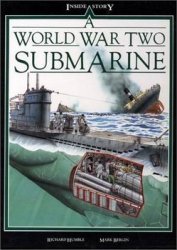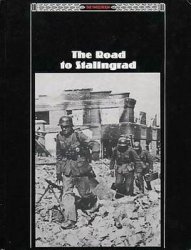When Reshef started out at 16.00 hours, he had four tank battalions and three infantry battalions on half-tracks. At nightfall, he moved down from the high ground in a south-westerly direction (along the route that the divisional reconnaissance unit had reconnoitred to the Great Bitter Lake on 9 October). His force reached Lexicon on the Great Bitter Lake without encountering any resistance and then turned northwards. The divisional reconnaissance unit that led Reshefs brigade divided into three sub-units; one unit skirted the north-east shore of the Great Bitter Lake and moved towards Matzmed; the second moved to the north of the first to reach the Canal; while the third moved to the north of the second and also reached the Canal. Thus this reconnaissance unit closed in on the Canal in a three-pronged advance, with the southern prong taking Matzmed.
The 7th Battalion continued to the west of Lexicon, passing the Chinese Farm on its right, attacking northwards in an endeavour to reach an Egyptian bridge six miles north of Matzmed; the 18th Battalion followed the 7th on its east flank and attacked east of Lexicon in a north-easterly direction towards ‘Missouri’, while the 40th Battalion attacked in a northeasterly direction, with one company at Tirtur and one company at Akavish, taking the Egyptian forces deployed along these two routes from the rear. The 42nd Infantry Battalion — with half a company of tanks —
Followed the divisional reconnaissance unit to the west of Lexicon to mop-up the Egyptian infantry. An additional infantry force (‘Force Shmulik’), composed of two regular paratroop companies and half a company of tanks, followed the 40th Infantry Battalion to clear up the Chinese Farm east of Lexicon; a third reserve infantry battalion under Major Nathan was held in reserve.
The divisional reconnaissance unit reached Matzmed and the points north of it along the Canal according to plan. After Reshef had passed the Lexicon-Tirtur crossroads heading northwards with the two battalions, fire was opened from the same area on the 18th Battalion as it moved forward east of Lexicon towards ‘Missouri’. Although tank, missile and bazooka fire hit the battalion, knocking out eleven tanks, the battalion commander continued on his mission with the remaining tanks.
But, unknown to Reshef, his force had moved into the administrative centre of the Egyptian 16th Infantry Division, to which the 21st Armoured Division had also withdrawn after being so badly mauled on 14 October. His force found itself suddenly in the midst of a vast army with concentrations of hundreds of trucks, guns, tanks, missiles, radar units and thousands of troops milling around as far as the eye could see. The Israeli force had come up through the unprotected southern flank of the Egyptian Second Army at the junction of the Egyptian Second and Third Armies — had entered by the ‘back door’, as it were — and had suddenly found itself plumb in the centre of the administrative areas of two Egyptian divisions and literally at the entrance to the 16th Infantry Division headquarters. Pandemonium broke out in the Egyptian forces. Thousands of weapons of all types opened fire in all direction, and the whole area seemed to go up in flames. The 40th Armoured Battalion reached the Tirtur-Lexicon crossroads and attacked, but the deputy battalion commander. Major Butel, was wounded and the attack was disrupted; a second company, under Major Ehud, moved up Akavish and cleared the route. The situation now was that the divisional reconnaissance - unit had reached Matzmed and the Canal to the north of Matzmed, while Reshef was north of the Chinese Farm attacking northwards with two battalions; the Tirtur-Lexicon crossroads was closed and the remainder of the brigade, with a large number of casualties, was to the south of the crossroads. The infantry forces were suffering very heavily.
The 7th Battalion, between Lexicon and the Canal, continued northwards according to plan; but the 18th, half a mile north of the Chinese Farm, came up against an enemy force including dug-in tanks and entered a fire-fight. Reshef described the situation to Sharon and Matt, who was following him, and proposed that Matt’s brigade move along the Nahala road hugging the north-eastern shore of the Great Bitter Lake, with the crossroads 800 yards on his right flank closed.
It was by now 21.00 hours. There were indications that the enemy was preparing for a counterattack from the north; pressure on the 7th Battalion and the 18th Battalion increased. The numerous casualties could not be evacuated because the Tirtur-Lexicon crossroads was blocked, so a battalion evacuation centre formed itself with all wounded next to
Reshefs tank. At 22.00 hours, the 7th Battalion commander, who was now six miles north of Matzmed, reported that he was down to one-third of his strength. Realizing that the brigade was spread far too wide, Reshef ordered the 7th Eatialion to withdraw some two miles and form a line with the 18th Battalion, half a mile north of the Chinese Farm. As they were moving, the battalion commander, Lieutenant-Colonel Amram, was wounded in the leg, and was evacuated in the tank that was picking up the wounded on the battlefield. (This tank stood all night next to Reshefs with the wounded battalion commander acting as loader/communications man inside.)
The battle for the Tirtur road increased in intensity as units of the Egyptian 14th Armoured Brigade attacked from the north, while the 7th Battalion was pulling back at approximately midnight. The scene in the area was one of utter confusion: along the Lexicon road raced Egyptian ambulances; units of Egyptian infantry were rushing around in all directions, as were Egyptian tanks. The impression was that nobody knew what was happening or what to do. On all sides, lorries, ammunition, tanks, surface-to-air missiles on lorries and radar stations were in flames in one huge conflagration which covered the desert. It was like Hades. Days later, the entire area between the Canal and ‘Missouri’ was to appear from the west bank as one vast, eerie, unbelievable graveyard. As a background to this scene, the concentrated forces of artillery on both sides fired with everything they had.
Again and again, the reserve paratroop battalion under Reshef attacked the crossroads, the paratroopers not realizing that they were attacking a major, concentrated Egyptian force of at least a division in strength. During the attack, part of the paratroop force was trapped and, despite several attempts to extricate them, was wiped out.
With two battalions to the west of the Chinese Farm and the remainder of his brigade to the south of the crossroads evacuating casualties and reorganizing, Reshef decided that he would attack the crossroads from the rear. This attack, which took place at 04.00 hours in the morning of the 16th, failed.
At dawn on the 16th, Amnon Reshef moved to high ground and surveyed the scene of the night’s battles. In all directions, the desert was covered with a vast fleet of burning and smoking tanks, vehicles, guns, transporters. Dead infantry lay everywhere. It seemed as if there was not a single item of military equipment that had escaped destruction: there were command caravans, mobile workshops, huge transporters carrying SAM-2 missiles, mobile kitchens. . . . The remnants of the Israeli forces were there too, and frequently the distances between them and the Egyptians were no more than a few yards.
Shortly thereafter, Reshef made another attempt to take the Lexicon-Tirtur crossroads. This time, Reshef and the company or so of tanks that he took with him did not storm the crossroads. Using daylight observation, and basing himself on alternate fire and movement, he gradually wore down the Egyptian force firing from maximum ranges. Exhausted by the night’s fighting and having sustained very heavy
Casualties, the Egyptians were unable to stand up to this slow battle of attrition — they suddenly broke and fled. Reshef occupied the crossroads. As he attempted to advance north-eastwards up the Tirtur road, however, he was forced to stop as Egyptian tanks, anti-tank guns and missiles opened up from the slopes of the ‘Missouri’ position; Reshef fell back to the crossroads. His brigade had now been very severely mauled, and he had lost over half of his force; a very high percentage of the officers and tank commanders were casualties. Tirtur was still closed. Although the crossroads was now held by the Israelis, the Egyptians were pressing from the north against the forces holding the line west of the Chinese Farm. Leaving a battalion to hold this northern line, Reshef withdrew his brigade to Lakekan on the shores of the lake to reorganize. During that night of intense fighting, Sharon’s division had suffered more than 300 men killed and had lost over a quarter of its 280 tanks. About 150 Egyptian tanks had been knocked out.
Meanwhile, at 21.30 hours on the 15th, Sharon, who had been misled into believing that the Egyptian forces were collapsing, had reported that Akavish Road was open. He had a force north of the Chinese Farm, but there was contact with the enemy armour at the Tirtur-Lexicon crossroads and he had incurred casualties there. The basis of this first, optimistic report had been the fact that Reshefs brigade had advanced and occupied Matzmed after securing Akavish. However, after Reshefs force had passed, the Egyptians had regrouped with their anti-tank weapons and — unknown to the advancing Israelis — had closed Akavish again. Subsequently, reports were received at Sharon’s headquarters that heavy anti-tank resistance was being encountered at Tirtur and the Chinese Farm, while the main Israeli move to the Canal was taking place some hundreds of yards to the south. Despite this very dangerous situation, Sharon ordered Danny Matt to follow Reshefs forces.




 World History
World History









